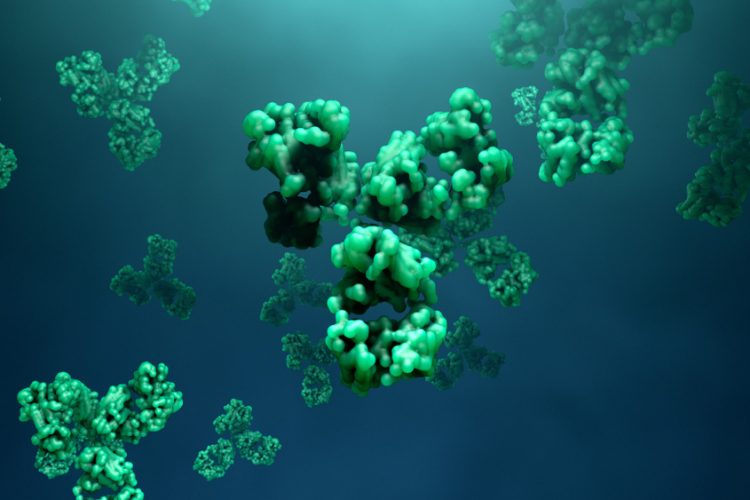Unlocking the potential of smart antibodies
Posted: 30 September 2024 | Yanay Ofran (Biolojic Design) | No comments yet
Biolojic Design is redefining antibody therapies by creating “programmable” antibodies that intelligently target well-validated autoimmune and oncology pathways. In this Q&A, CEO and founder Yanay Ofran, PhD, describes Biolojic’s groundbreaking approach, which leverages AI and machine learning to design antibodies capable of adjusting their behaviour based on their biological environment. These differentiated programs have the potential to provide better clinical outcomes than existing treatments.


Compared to traditional antibody therapies, how does the precision binding approach in your antibody design impact the therapeutic window and dosing regimen in preclinical models?
Our approach represents a paradigm shift. Traditional drug discovery is based on the premise that target proteins have biological functions. Drugs should shut off, or antagonise, proteins with undesirable functions. This can be simplistically explained as: proteins are smart, antibodies are stupid.
At Biolojic Design, we recognise that antibodies can also be smart. They are also proteins, after all, and can have biological functions. Thus, we design antibodies which are functional proteins that complement the function of one or more targets, driving an entire pathway to the desired outcome. Our antibodies have a precise effect on one or more targets and adjust their activity to each microenvironment and each point in time. This is why our drugs can have a better therapeutic index. For example, AU007, the antibody we designed against interleukin-2 (IL-2), shows very promising efficacy in cancer patients while appearing to be safer than other compounds that address this pathway. This is because we designed it to interact with the patient’s own IL-2 in a way that activates cells that attack the tumour, but inhibits cells that protect the tumour. We see this inhibition of Regulatory T cells (Tregs) in all patients, which is something that no previous IL-2 based treatment has been able to achieve.
How do you assess and validate multibodies’ ability to bind multiple targets in complex biological systems, while maintaining specificity and avoiding off-target effects?
As I have explained, antibodies are proteins. No one is surprised to find a protein that is highly specific to more than one binding partner. In fact, virtually all proteins are highly specific to multiple other proteins, metabolites, lipids and nucleic acids. They strictly avoid what they should not bind to while also binding tightly to many different things. That is the beauty of these macromolecules. We are simply unleashing what evolution enables. Testing it biochemically and functionally is also well established. This functional research works. Our conceptual innovation here is quite small, actually. It’s an obvious next step, once you acknowledge that antibodies are proteins too.
Can you describe how your proprietary data and machine learning (ML) models have accelerated antibody development?
Our approach is simple: one drug, one model. We generate new training data to train a new model for each project. It is our assessment that in the foreseeable future there will not be a single generative model that will be able to provide a solution to all problems. The space of possible parameters is too vast and the available data is too scant. Therefore, once we define a desired target product profile (TPP), we spend months in the lab collecting billions of measurements and accumulating data to train a model that will generate an antibody that is manufacturable and meets our functional requirements. This saves a lot of time, because we usually don’t need to optimise our sequence for developability and also, since we focus on well-understood biology, the in vitro models, in vivo models and clinical development paths are all well characterised. This means that the time to clinical proof of concept (PoC) could be significantly shorter. For example, in our BD8 programs, it took less than four years from project initiation to first safety and efficacy data in patients.
How do you ensure that your high-throughput data collection methods generate reliable and actionable insights during early preclinical phases?
People see it as a challenge because most use computational work to inform their experimental work. Our experiments are designed to serve our computational models. Data collection is not something we do on the side after we finish experiments that had other goals; it is a goal of its own.
Given your focus on autoimmune and oncology indications, how do you prioritise targets for your pipeline, and what preclinical success factors guide your decision to advance a candidate into clinical trials?
We ask ourselves the following four questions:
- Is the pathway we want to address well understood? is its relation to the disease well figured out and validated?
- Is there still an unmet need?
- Can our technology solve the problem? Can we design a functional antibody that will use the well understood biology to address the unmet need?
- Can a company of our size develop this drug quickly?
These guide our thinking as to the best targets for Biolojic to pursue.
About the author
Yanay Ofran, PhD, CEO and founder of Biolojic Design


Yanay is also the co-founder and chief scientific officer of Aulos, an immuno-oncology company working to revolutionise cancer care through the development of best-in-class IL-2 therapeutics, and co-founder and chairman of Ukko, a biotech company that designs and develops mRNA vaccines for the treatment of food allergies.
Dr Ofran received a PhD with distinction in Molecular Biophysics and Biomedical Informatics from Columbia University and was a professor of bioinformatics and molecular research at Bar-Ilan University. He is the author of over 100 papers and patents.
Related topics
Antibodies, Artificial Intelligence, Biologics, Computational techniques, Drug Development, Oncology, Therapeutics
Related conditions
autoimmune diseases, Cancer
Related organisations
Biolojic Design
Related people
Yanay Ofran (Biolojic Design)








